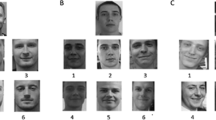Abstract
Previous research suggested that real-world lies are detected through hard evidence, such as physical evidence or a direct confession, and not via nonverbal clues. However, we argue that discovering a lie is a process, and nonverbal clues are an important source of information that can induce suspicion, which then triggers the search for hard evidence. We replicated an original study suggesting the irrelevance of nonverbal clues, but experimentally manipulated the wording of the critical question as ‘discovering’ a lie versus ‘suspecting’ a lie. A second study was conducted that further manipulated the phrasing to ask about ‘events’ versus ‘clues’ that led one to detect the lie. Results of both studies showed that those asked about suspecting a lie cited nonverbal behaviors significantly more often than those asked about discovering a lie. Thus, in contrast to previous research, these findings suggest the importance of behavioral clues (e.g. verbal and nonverbal behavior), specifically in the early stage of lie detection.


Similar content being viewed by others
Notes
This is an assumption we feel is not justified; the reason behaviors were originally studied was to see if individuals could detect deception from behavior alone, not because researchers believed that people do detect deception by behavior alone. Although if you are a parent you know you often detect a child’s deception by behavior alone (see Frank and Svetieva 2013, for a review).
Based on the sample, the Park et al caution that this number should only be considered in its relative size, not as a generalizable percentage.
Although suspicion and distrust can make people feel the need to search for truth, we acknowledge that lies can also be discovered serendipitously. For example, a lie about infidelity can be detected through opening the bedroom door to find one’s partner in the throes of passion with another. However, this would really be detecting a concealment lie, as nothing is spoken; particularly if fidelity was implied in the relationship.
Thank you to the reviewer who suggested this extension.
References
Aamodt, M. G., & Custer, H. (2006). Who can best catch a liar? A meta-analysis of individual differences in detecting deception. Forensic Examiner, 15(1), 6–11.
Blair, J. P., Levine, T. R., Reimer, T. O., & McCluskey, J. D. (2012). The gap between reality and research: Another look at detecting deception in field settings. Policing: An International Journal of Police Strategies & Management, 35(4), 723–740.
Blair, J. P., Levine, T. R., & Shaw, A. S. (2010). Content in context improves deception detection accuracy. Human Communication Research, 36(3), 423–442. doi:10.1111/j.1468-2958.2010.01382.x.
Bond, C. F., & DePaulo, B. M. (2006). Accuracy of deception judgments. Personality and Social Psychology Review, 10(3), 214–234.
Bond, C. F., Omar, A., Pitre, U., Lashley, B. R., Skaggs, L. M., & Kirk, C. T. (1992). Fishy-looking liars: Deception judgment from expectancy violation. Journal of Personality and Social Psychology, 63(6), 969–977. doi:10.1037/0022-3514.63.6.969.
Burgoon, J. K., & Walther, J. B. (1990). Nonverbal expectancies and the evaluative consequences of violations. Human Communication Research, 17(2), 232–265. doi:10.1111/j.1468-2958.1990.tb00232.x.
DePaulo, B. M., Lindsay, J. J., Malone, B. E., Muhlenbruck, L., Charlton, K., & Cooper, H. (2003). Cues to deception. Psychological Bulletin, 129(1), 74. doi:10.1037//0033-2909.129.1.74.
Ekman, P. (1985/2001). Telling lies: Clues to deceit in the marketplace, marriage, and politics. New York: Norton.
Frank, M. G., & Svetieva, E. (2013). Deception. In D. Matsumoto, M. Frank, & H. S. Hwang (Eds.), Nonverbal communication: Science and applications (pp. 121–144). Newbury Park: Sage.
Frijda, N. H. (1986). The emotions. New York: Cambridge University Press.
Kahneman, D., Slovic, P., & Tversky, A. (1982). Judgment under uncertainty: Heuristics and biases. Cambridge: Cambridge University Press.
O’Sullivan, M., Frank, M. G., Hurley, C. M., & Tiwana, J. (2009). Police lie detection accuracy: The effect of lie scenario. Law and Human Behavior, 33(6), 530–538. doi:10.1007/s10979-008-9166-4.
O’Sullivan, M., & Ekman, P. (2004). The wizards of deception detection. In P. Granhag & L. Strömwall (Eds.), The detection of deception in forensic contexts (pp. 269–286). Cambridge: Cambridge University Press.
Park, H. S., Levine, T., McCornack, S., Morrison, K., & Ferrara, M. (2002). How people really detect lies. Communication Monographs, 69(2), 144–157. doi:10.1080/714041710.
Schul, Y., Mayo, R., & Burnstein, E. (2008). The value of distrust. Journal of Experimental Social Psychology, 44(5), 1293–1302. doi:10.1016/j.jesp.2008.05.003.
Schwarz, N. (1999). Self-reports: How the questions shape the answers. American Psychologist, 54(2), 93–105. doi:10.1037/0003-066X.54.2.93.
Susskind, J. M., Lee, D. H., Cusi, A., Feiman, R., Grabski, W., & Anderson, A. K. (2008). Expressing fear enhances sensory acquisition. Nature Neuroscience, 11(7), 843–850. doi:10.1038/nn.2138.
Tooby, J., & Cosmides, L. (2005). Conceptual foundations of evolutionary psychology. In D. M. Buss (Ed.), The handbook of evolutionary psychology (pp. 5–67). Hoboken: Wiley.
Vrij, A., Granhag, P. A., & Porter, S. (2010). Pitfalls and opportunities in nonverbal and verbal lie detection. Psychological Science in the Public Interest, 11(3), 89–121. doi:10.1177/1529100610390861.
Zuckerman, M., DePaulo, B. M., & Rosenthal, R. (1981). Verbal and nonverbal communication of deception. Advances in Experimental Social Psychology, 14(1), 59. doi:10.1016/S0065-2601(08)60369-X.
Author information
Authors and Affiliations
Corresponding author
Additional information
S. B. Dietrich and Timothy Shaddock are formerly affiliated with University at Buffalo, but no longer affiliated with an academic institution.
Rights and permissions
About this article
Cite this article
Novotny, E., Carr, Z., Frank, M.G. et al. How People Really Suspect and Discover Lies. J Nonverbal Behav 42, 41–52 (2018). https://doi.org/10.1007/s10919-017-0263-2
Published:
Issue Date:
DOI: https://doi.org/10.1007/s10919-017-0263-2




